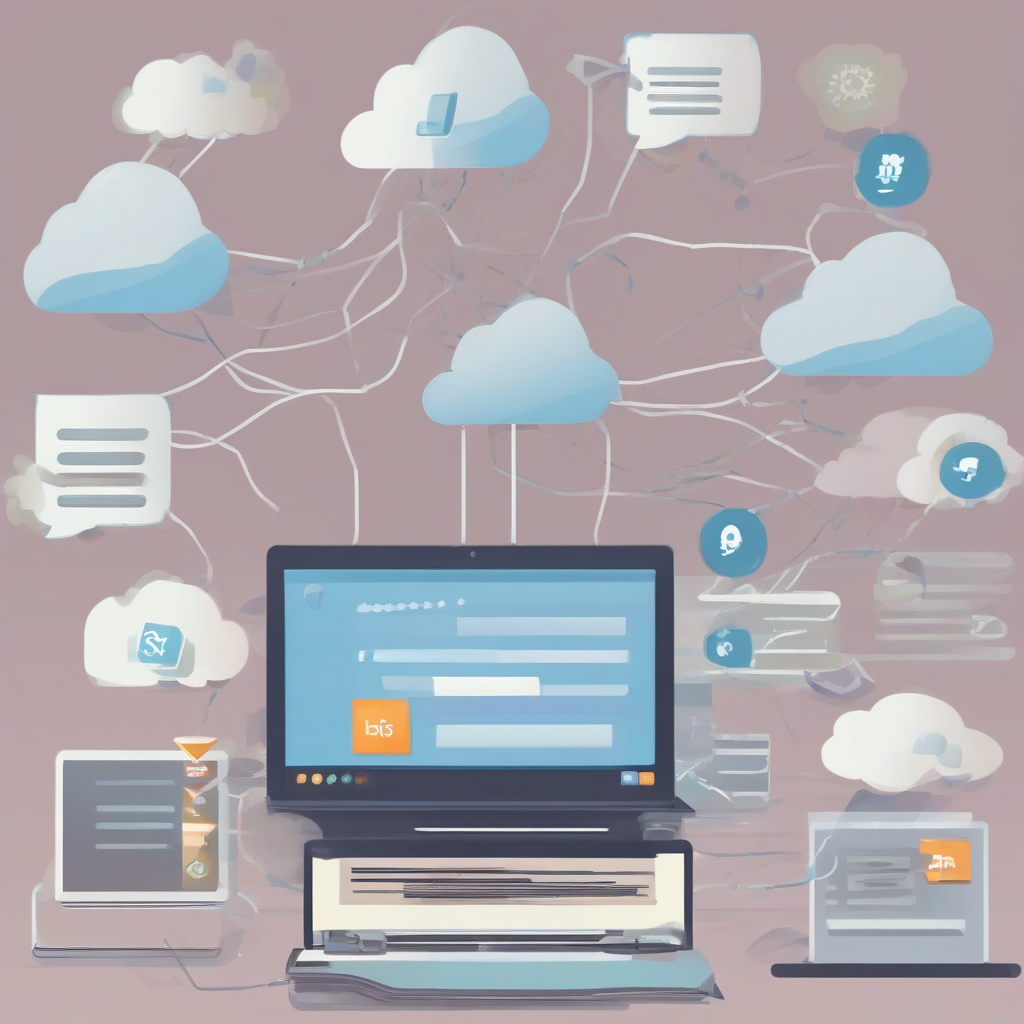Revolutionizing Business Operations: A Deep Dive into Cloud-Based ERP Solutions
Enterprise Resource Planning (ERP) systems have long been the backbone of efficient business operations, integrating various departments and processes into a unified platform. However, traditional on-premise ERP solutions often come with significant upfront costs, complex implementation processes, and ongoing maintenance burdens. The advent of cloud computing has revolutionized the ERP landscape, offering cloud-based ERP solutions that are more accessible, flexible, and cost-effective than ever before.
What are Cloud-Based ERP Solutions?
Cloud-based ERP solutions, also known as Software as a Service (SaaS) ERP, deliver ERP functionality over the internet. Unlike on-premise systems that reside on a company’s own servers, cloud ERP systems are hosted and maintained by a third-party provider. This means businesses can access their ERP system from anywhere with an internet connection, using various devices like desktops, laptops, tablets, and smartphones.
Key Benefits of Cloud-Based ERP Solutions
- Reduced Costs: Eliminates the need for significant upfront investments in hardware, software licenses, and IT infrastructure. Subscription-based models offer predictable monthly expenses, making budgeting easier.
- Increased Accessibility: Access data and applications from anywhere with an internet connection, improving collaboration and responsiveness.
- Enhanced Scalability: Easily scale resources up or down based on business needs, avoiding costly over-provisioning or under-provisioning of resources.
- Improved Flexibility: Adapt quickly to changing business requirements without lengthy implementation cycles or significant IT interventions.
- Simplified Maintenance: The vendor handles software updates, security patches, and system maintenance, freeing up internal IT resources.
- Enhanced Collaboration: Real-time data access and collaboration tools facilitate better communication and information sharing across departments.
- Better Security: Cloud providers invest heavily in security infrastructure and expertise, often offering more robust security than many individual businesses can afford.
- Faster Deployment: Cloud ERP systems can be deployed much faster than on-premise systems, resulting in quicker time-to-value.
- Automatic Updates: Users automatically receive the latest updates and features, ensuring the system remains current and efficient.
- Disaster Recovery: Cloud providers typically offer robust disaster recovery capabilities, ensuring business continuity in case of unforeseen events.
Types of Cloud-Based ERP Solutions
Cloud-based ERP solutions are available in various deployment models, each with its own set of advantages and disadvantages:
- Public Cloud: The ERP system is hosted on the provider’s shared infrastructure. This is the most cost-effective option, but may offer less control over customization and security.
- Private Cloud: The ERP system is hosted on a dedicated infrastructure for a single organization. This provides greater control and security but comes with higher costs.
- Hybrid Cloud: A combination of public and private cloud deployments, allowing businesses to leverage the benefits of both models. This offers flexibility but can be more complex to manage.
Choosing the Right Cloud-Based ERP Solution
Selecting the appropriate cloud-based ERP solution requires careful consideration of various factors:
- Business Size and Complexity: Different ERP solutions cater to businesses of varying sizes and complexities. A small business may require a simpler solution than a large enterprise.
- Industry-Specific Requirements: Some ERP solutions are tailored to specific industries, offering functionalities relevant to those sectors.
- Integration Capabilities: The ability to integrate with existing systems, such as CRM, supply chain management, and e-commerce platforms, is crucial.
- Scalability and Flexibility: The solution should be able to scale with the business’s growth and adapt to changing needs.
- Vendor Reputation and Support: Choose a reputable vendor with a proven track record and reliable customer support.
- Implementation Process: Assess the vendor’s implementation process and the level of support provided during the transition.
- Cost and Pricing Model: Evaluate the total cost of ownership, including subscription fees, implementation costs, and ongoing support.
- Security and Compliance: Ensure the vendor meets necessary security and compliance standards to protect sensitive data.
Key Features of Cloud-Based ERP Solutions
Most cloud-based ERP solutions offer a comprehensive suite of features, including:
- Financial Management: General ledger, accounts payable, accounts receivable, budgeting, financial reporting.
- Supply Chain Management: Inventory management, procurement, production planning, order fulfillment.
- Human Capital Management (HCM): Payroll, benefits administration, recruitment, talent management.
- Customer Relationship Management (CRM): Sales force automation, customer service, marketing automation.
- Project Management: Project planning, tracking, and reporting.
- Business Intelligence (BI): Data analytics and reporting for informed decision-making.
- Workflow Automation: Automating routine tasks to improve efficiency.
Challenges of Cloud-Based ERP Solutions
While cloud-based ERP solutions offer numerous advantages, businesses should also be aware of potential challenges:
- Internet Dependency: Reliance on a stable internet connection is crucial for accessing the system. Interruptions can disrupt business operations.
- Data Security Concerns: While cloud providers invest heavily in security, businesses still need to implement appropriate security measures to protect their data.
- Vendor Lock-in: Migrating from one cloud provider to another can be complex and costly.
- Limited Customization: Some cloud ERP solutions offer limited customization options compared to on-premise systems.
- Integration Complexity: Integrating with legacy systems or other cloud applications can be challenging.
- Data Migration: Migrating existing data to a cloud-based ERP system can be a complex process.
- User Training: Employees require training to effectively use the new system.
Future Trends in Cloud-Based ERP Solutions
The cloud-based ERP landscape is constantly evolving, with several key trends shaping its future:
- Artificial Intelligence (AI) and Machine Learning (ML): Integration of AI and ML capabilities for enhanced automation, predictive analytics, and decision support.
- Internet of Things (IoT) Integration: Connecting ERP systems with IoT devices to gain real-time insights into operations and improve efficiency.
- Blockchain Technology: Implementing blockchain for enhanced security, transparency, and traceability in supply chains.
- Increased Mobile Accessibility: Continued development of mobile-friendly interfaces for accessing ERP systems on various devices.
- Enhanced Analytics and Reporting: Improved analytics capabilities to provide more actionable insights from ERP data.
- Greater Focus on User Experience: Development of intuitive and user-friendly interfaces to improve adoption and productivity.
Conclusion (Omitted as per instructions)
